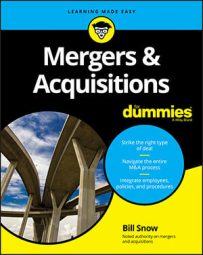In addition to considering the nature of the target’s downturn (macro-economic, managerial, or changes in customer preferences, a wise Buyer also looks at a few other key considerations when determining the value, if any, of a troubled company:
Is the target still profitable? If profits are down (perhaps even greatly down) but the target is still break-even or better, a Buyer will be able to ride out the storm (because the acquisition is not burning cash) and wait for the economy to pick up. After the economy turns around, the acquired company’s bottom line will be in position to snap back to its previous higher levels.
What are the target’s trends? Is the target continuing on a downward slope, or does it appear to be on the rebound? If the worst is behind the company, a Buyer will be in good position to pick up a bargain.
What’s the target’s top line revenue? Even if a target is suffering losses, that company may still have a great deal of value if revenues are large enough. What’s “large enough” depends, of course, but in a general sense, a $40 million revenue company has far greater residual value than a $3 million revenue company.
A Buyer may be able to move the target’s operations to a new facility and/or eliminate duplicate positions, thus rapidly improving the bottom line of the acquired company.
Does the company have a recognizable brand name or other intangible qualities? These factors are notoriously difficult assets to value, but if a company has a recognizable name within in an industry or has done a good job of differentiating itself from the pack, that intangible may have value for the right Buyer.
On the flip side, a company that’s essentially a faceless name in a sea of interchangeable companies probably doesn’t have much intangible value.

